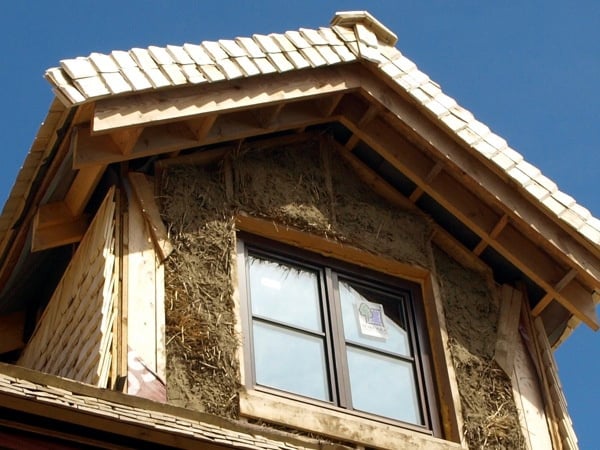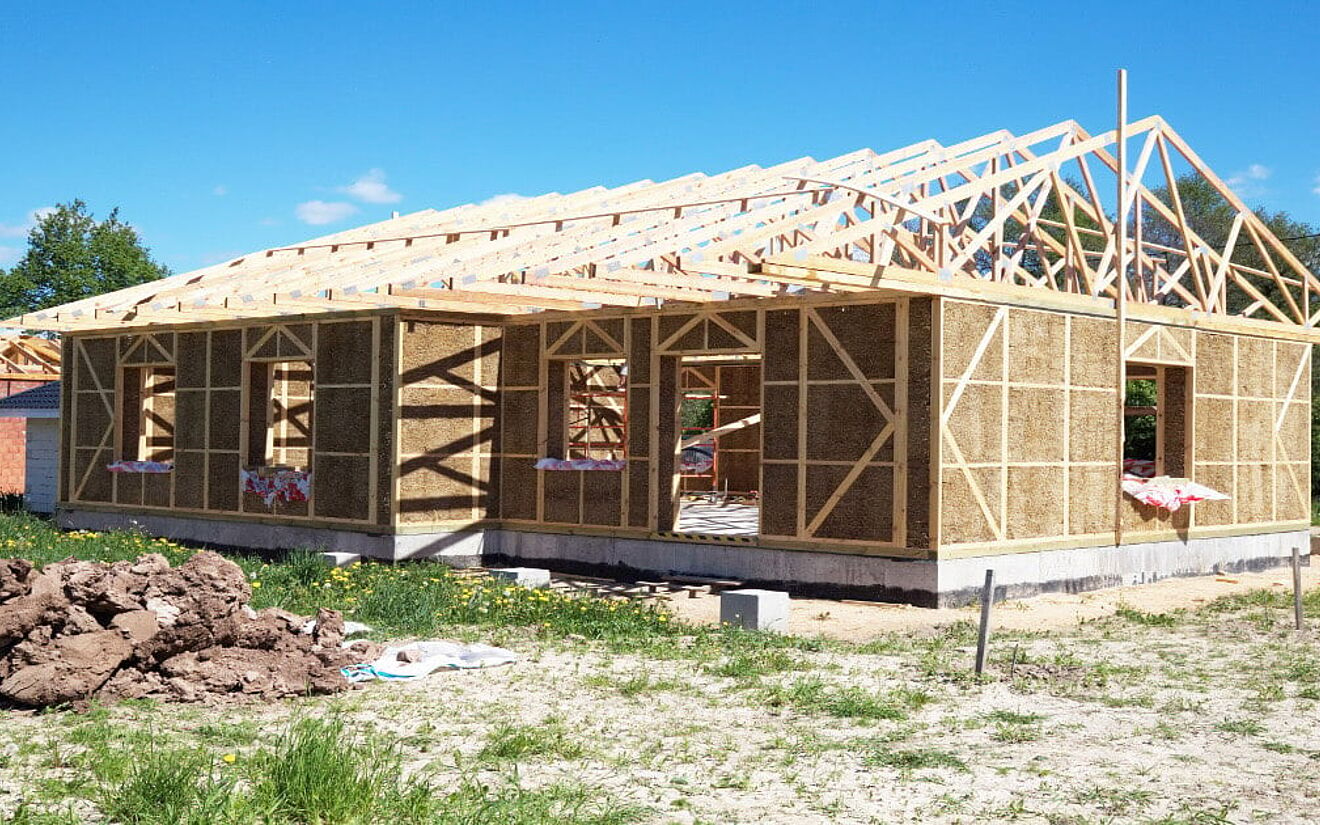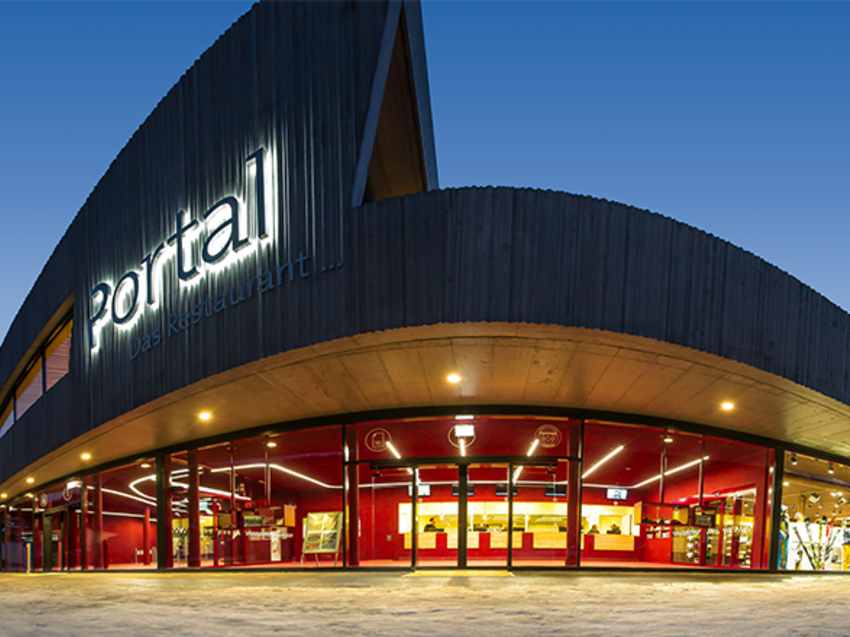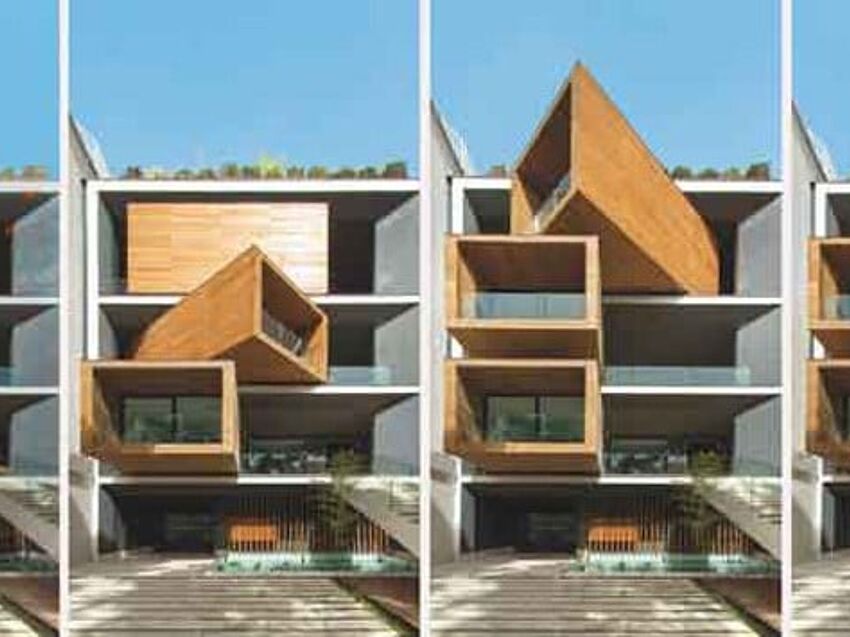Building in an environmentally friendly manner, using regionally grown materials, achieving the passive building standard with insulation – many responsible clients want to achieve this. As of recently, they now have one more attractive alternative: the straw bale house. With the increasing trend towards the eco home, architects are rediscovering old natural materials. A house made of straw is environmentally-friendly, affordable, has a healthy indoor climate and is extremely pleasant to live in. Everything about the revival of the historic building material.

Official straw construction
Building with straw began in the US. At the end of the 19th century, the bale press was invented in Nebraska. People built the first straw bale houses due to the lack of wood and wealth of grain. In the early 21st century, eco architecture discovered corn stalks for insulation. Since 2014, straw has been approved as a building material. Straw bales may be used in non-load bearing construction methods without additional approval. A straw house does not immediately go up in flames, contrary to all preconceptions: Building straw has the building material class B2 and is considered as normally flammable. When combined with an eight-centimeter thick layer of clay, it is classified in the fire resistance classification F 30 ("fire retardant"). A special guideline is meant to create uniform quality standards for building with straw.
Why straw?
Straw is available regionally in many places and is a prime example of a sustainable ecological building material. The stalks of wheat, barley, etc. are a by-product of agriculture and grow within a few months. Straw bales produce essentially no pollutants during creation and can easily be disposed of inexpensively and in an environmentally-friendly manner. An excellent insulation value ensures a favorable ecological balance and saves heating energy. A house of straw at least achieves the standard of a low-energy house in terms of energy efficiency.
How a house is made from stalks
Building straw is used in the form of compressed small bales in cuboid shape. The bales may not bear any static load. They are installed and clad between or in front of a stud frame structure as murals and thermal insulation material. Usually several layers of clay plaster are applied. Alternatively, a clay floating can be used and a lime plaster is used for finishing. Wooden paneling is also common. In any case, the wall created is very sturdy and the straw surface is protected from the weather. This is important, because, like all natural materials, straw is susceptible to moisture damage and mildew.
Building in an environmentally-friendly manner does not have to be expensive
The dream of an ecological house made of straw is affordable. Straw bale-insulated buildings can cost 5 to 10 percent less than conventionally built homes and are comparable to other sustainable healthy forms of living in terms of building costs. Straw can be sourced locally at much lower prices than other insulation materials. Thus, money can be saved on average despite the higher costs for the more complex processing. In addition, the very good insulation – especially in conjunction with alternative heating technologies such as solar collectors and photovoltaics – reduces the additional costs of living tremendously.
A wonderful living climate
Insulating with straw ensures warm interior walls, very good air quality and uniform humidity – between 50 to 60 percent depending on additional heating. According to the Fachverband Strohballenbau Deutschland e.V. (FASBA), there are about 300 straw structures in Germany. The projects realized are very different. The currently largest and, at five stories, highest straw-insulated building is the North German Center for Sustainable Building in Verden.
Whether a house of straw or residence in the ground – natural building materials create a pleasant living climate, provide a good feeling and make an important contribution to climate protection.




